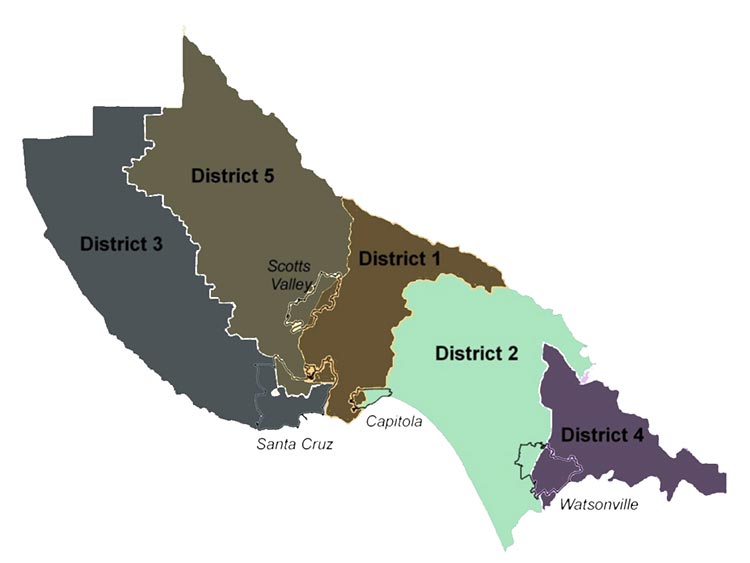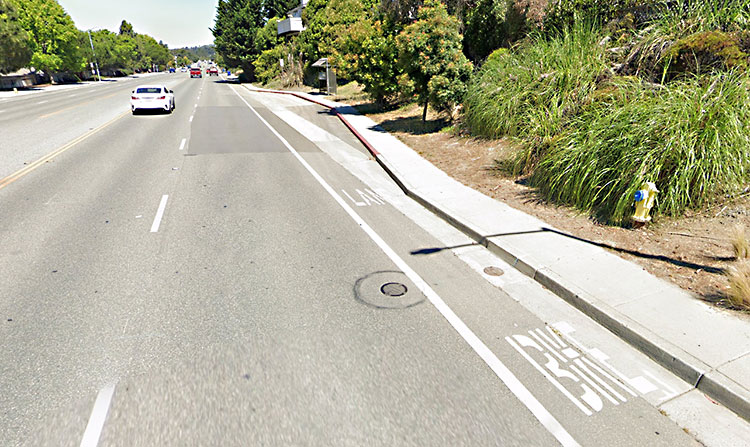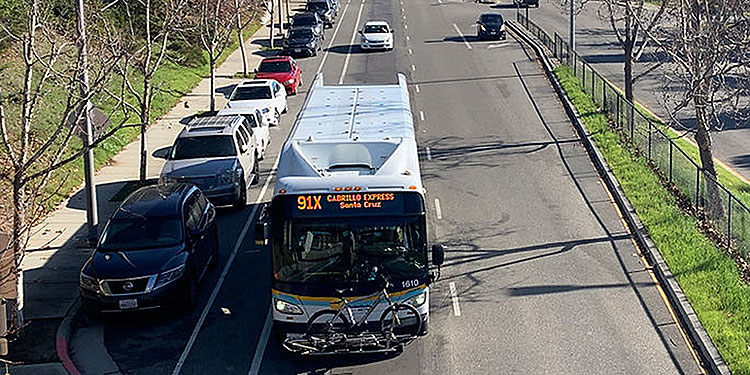By Zach Friend, Supervisor, Second District
The County recently held the first of two community meetings to discuss a significant investment into improvements toward improved bike, pedestrian and transit options along the Soquel corridor.
 While these meetings are focusing specifically on the improvements planned to the Soquel Drive corridor, the funding provides for additional improvements throughout the mid and south county areas.
While these meetings are focusing specifically on the improvements planned to the Soquel Drive corridor, the funding provides for additional improvements throughout the mid and south county areas.
The funding comes from an over $100 million grant from the California Transportation Commission for multi-modal improvements to our local transportation network.
The funding was due to a grant application from the local Regional Transportation Commission (RTC) and is a result of funding from Senate Bill 1: the Solutions for Congested Corridors Program and Local Partnership Competitive Program.
Our competitiveness for these programs was due in large part to our passage of Measure D, which provides a local match for these major transportation projects.
What challenges will the funding address?
The funding works to address a number of issues that are particularly acute in the mid and south county areas. First, Highway 1 congestion.
As many of you know, congestion on the highway impacts everyone including those simply trying to get to work or back home, emergency vehicles, buses and delivery vehicles. The second issue is cut-through traffic.
As a result of the highway congestion, many vehicles exit the highway and create safety issues (including for bike and pedestrians) on Soquel and other side streets. The third issue is bike and pedestrian safety. Our area is the fifth worst in the state for bike collisions — there is a need to improve bike and pedestrian safety facilities and the increased vehicle usage of Soquel and other side streets is a contributing factor to these increased collisions.
What will be funded?
The meeting (and upcoming meeting — details are below) spoke about the significant improvement on Soquel, including 5 miles of buffered/protected bicycle lanes, 46 green bike boxes for left turn movements, new sidewalks (to connect to existing sidewalk facilities) ADA improvements, 96 crosswalk upgrades, crosswalk warning devices at 10-mid block locations, and adaptive traffic signal control with transit prioritization at 23 intersections (to improve bus transit time).
 A lot of these were requested by the community to improve access to local schools and major job centers.
A lot of these were requested by the community to improve access to local schools and major job centers.
For example, near Mar Vista Elementary and Cabrillo College, new buffered bike lanes and sidewalks are planned that will connect to existing sidewalks to improve pedestrian access to schools. The project will also improve drainage and add retaining walls and/or hardscape where needed to improve safety in the area.
Three new sets of auxiliary lanes on Highway 1 between Soquel Drive and State Park Drive — in one of the most congested corridors in the County — are also planned. Additionally, it will allow for the first 5.75-miles of a 7.5-mile hybrid bus-on-shoulder/auxiliary lane facility, where transit buses can travel in the auxiliary lane between intersections and on the shoulders at intersections to bypass traffic.
Two new Highway 1 bicycle/pedestrian overcrossings (Chanticleer Avenue and the long-awaited Mar Vista Drive project). A bridge replacement at Capitola Avenue, with new pedestrian and bike facilities is also part of the funding.
What are the benefits of these projects?
As the CTC noted in their staff report, “the project will increase multimodal options, reduce vehicle miles traveled, reduce congestion, and reduce greenhouse gas emissions.”
It will increase safety and reduce transportation times on this congested corridor with an innovative package of projects to improve and integrate transit, active transportation, and highway/local roadway modes of travel.
 Transit buses can bypass traffic at intersections by traveling on the new Highway 1 shoulder and can also travel more efficiently on Soquel with signal prioritization. Safe routes to school will increase with new buffered bike lanes and new sidewalks and crosswalk improvements on Soquel as well as two new bike and pedestrian overcrossings to ensure connection between neighborhoods and new safer bike and pedestrian routes.
Transit buses can bypass traffic at intersections by traveling on the new Highway 1 shoulder and can also travel more efficiently on Soquel with signal prioritization. Safe routes to school will increase with new buffered bike lanes and new sidewalks and crosswalk improvements on Soquel as well as two new bike and pedestrian overcrossings to ensure connection between neighborhoods and new safer bike and pedestrian routes.
The highway improvements will mean less cut through traffic on side streets and Soquel improving neighborhood safety and congestion.
Overall, the projects will have equity and environmental benefits with a level of investment that hasn’t been seen in our county. Lower-income residents often are impacted the most by longer commutes and unreliable transit times and in many communities have higher rates of bike and pedestrian incidents.
These improvements will improve bike and pedestrian safety, reduce commute times and improve bus service — which, while this benefits the entire community — it has the greatest impact on those that often live the furthest from employment options due to affordable housing challenges and rely on major transit.
What are the next steps?
The County will be the lead agency in implementation of the multimodal improvements on Soquel. A second community meeting on the Soquel Drive proposal will be held (virtually) on Jan. 20 from 6-7:30 pm. You can register for it at: http://bit.ly/soquelzoom1
The Highway 1 improvements will be constructed by Caltrans with the RTC implementing environmental clearance and final design. The RTC anticipates that all components of this extensive project will be under construction by 2023 with some sooner.
For more information on the Watsonville-Santa Cruz Multimodal Corridor Program visit https://sccrtc.org/projects/multi-modal/wsc-mc/.
If you’d like to review the specific proposals for the Soquel Drive corridor you can visit www.soqueldrivebufferedproject.com.
•••
As always, I appreciate any feedback you may have on this (or any other County issue). I’m maintaining regular updates on social media at www.facebook.com/supervisorfriend and you can always call me at 454-2200.



